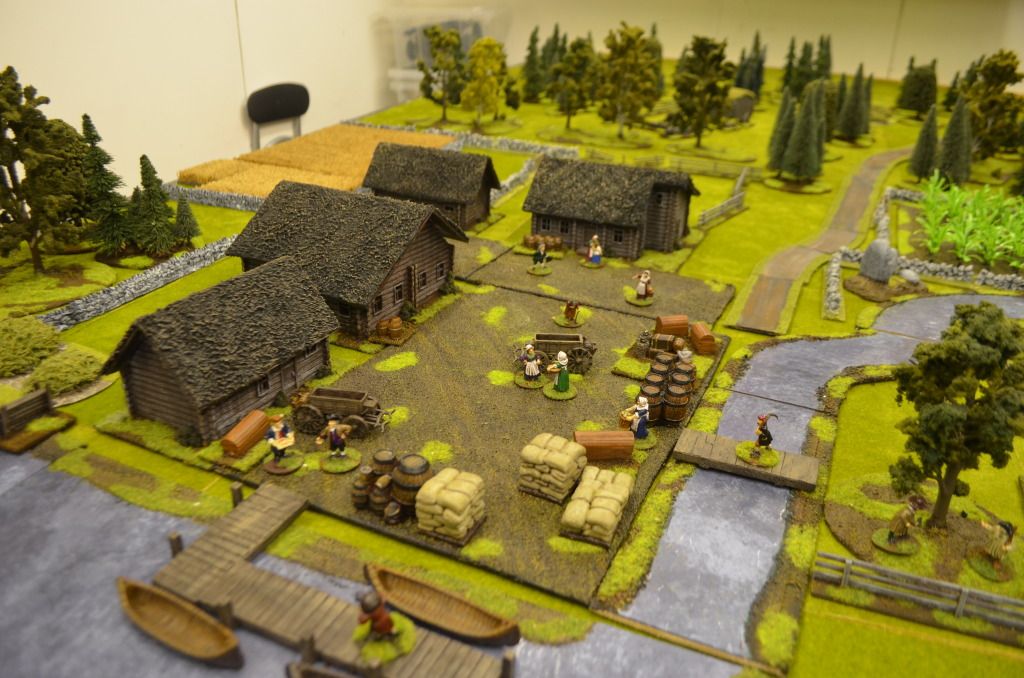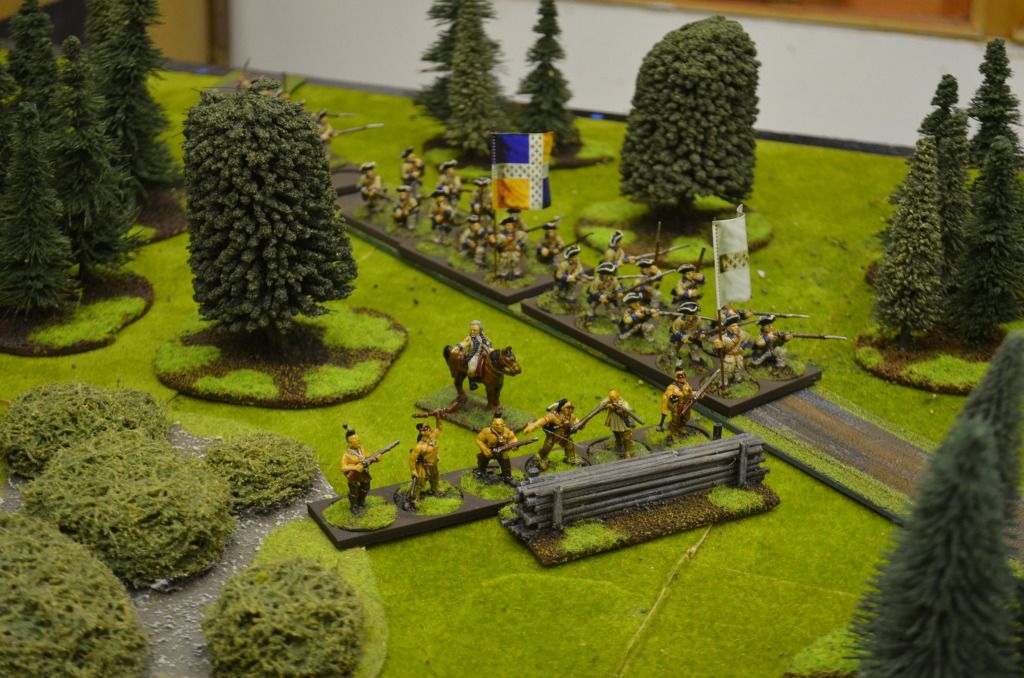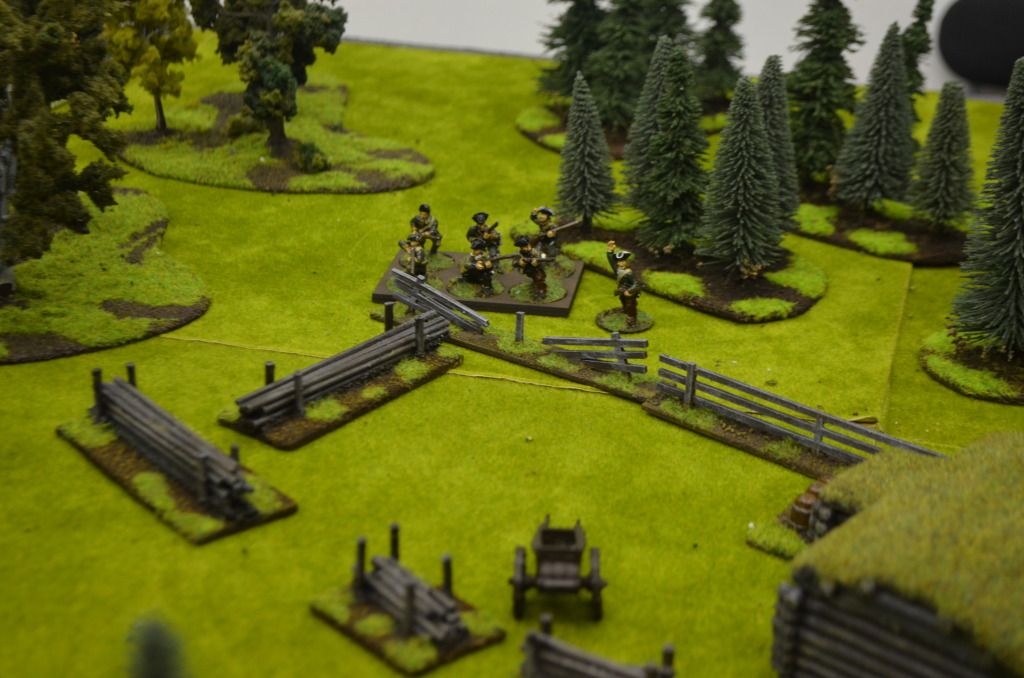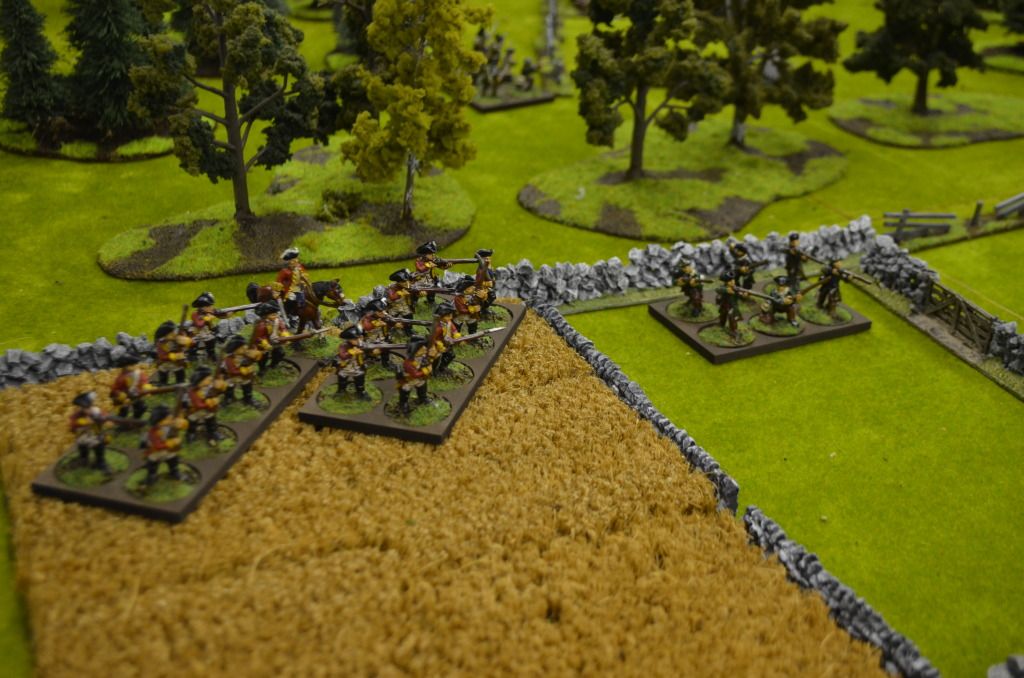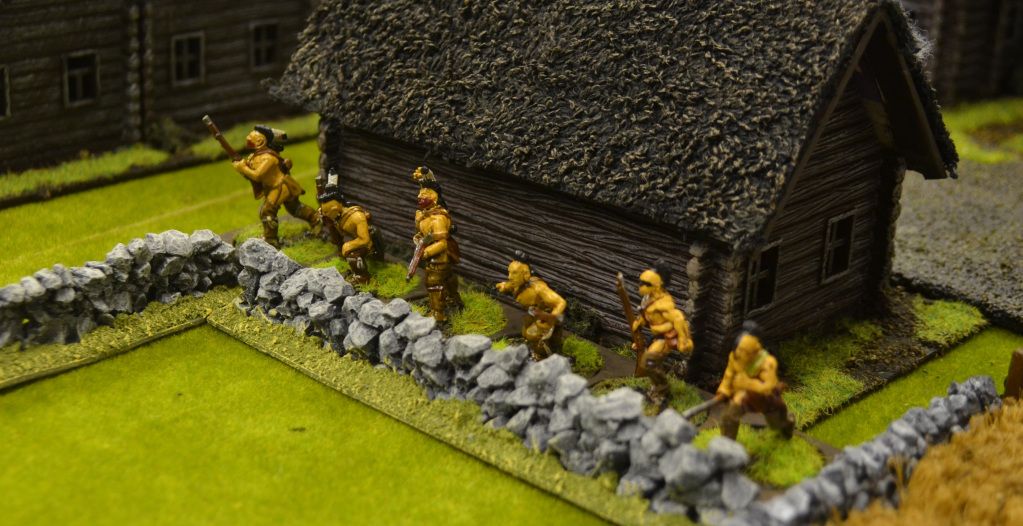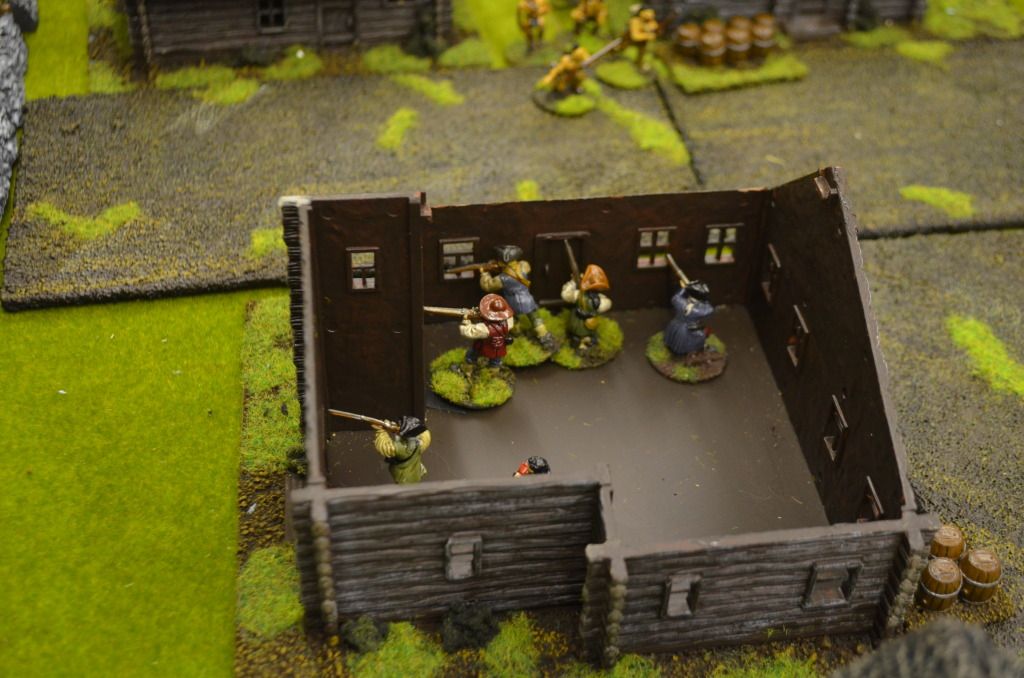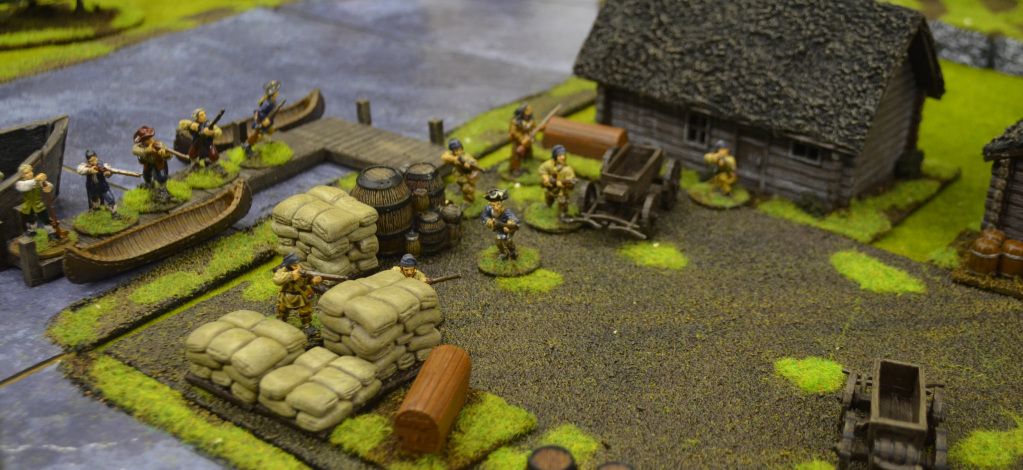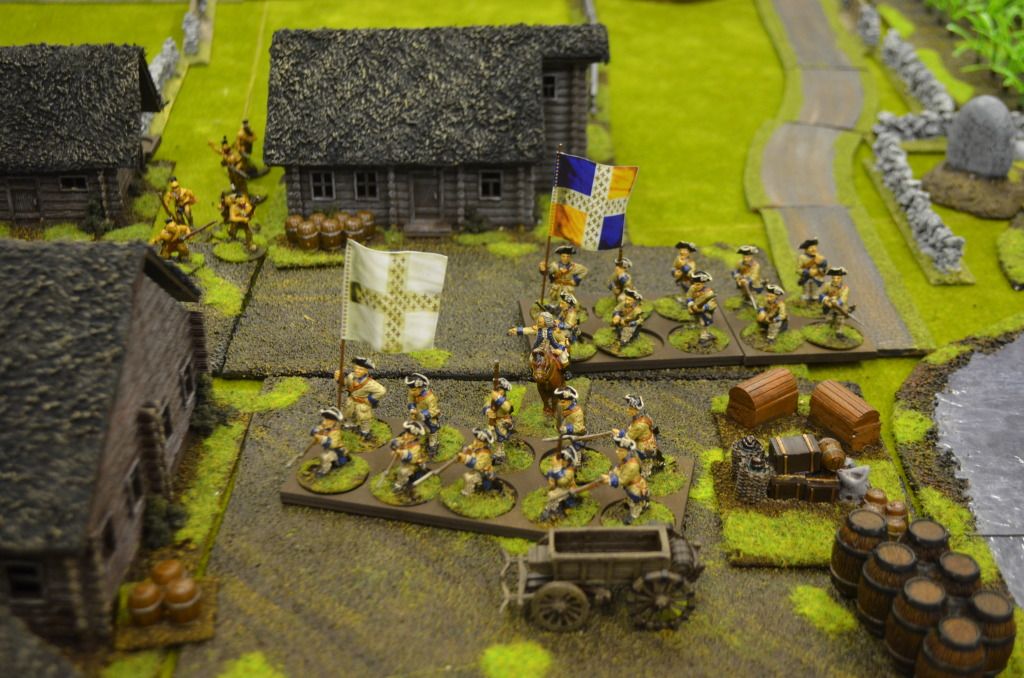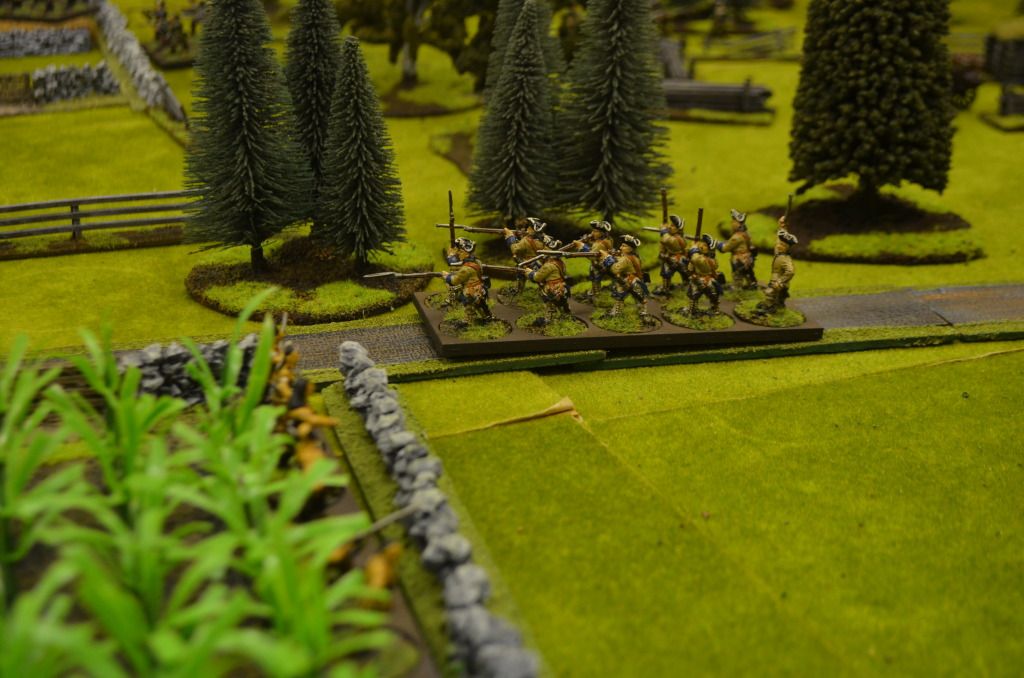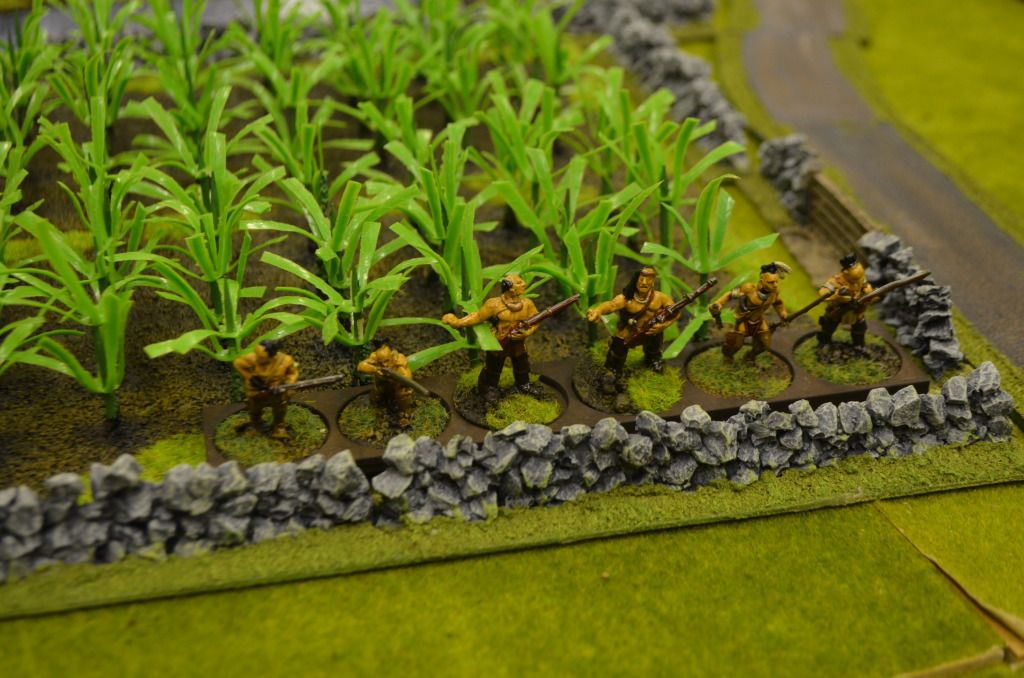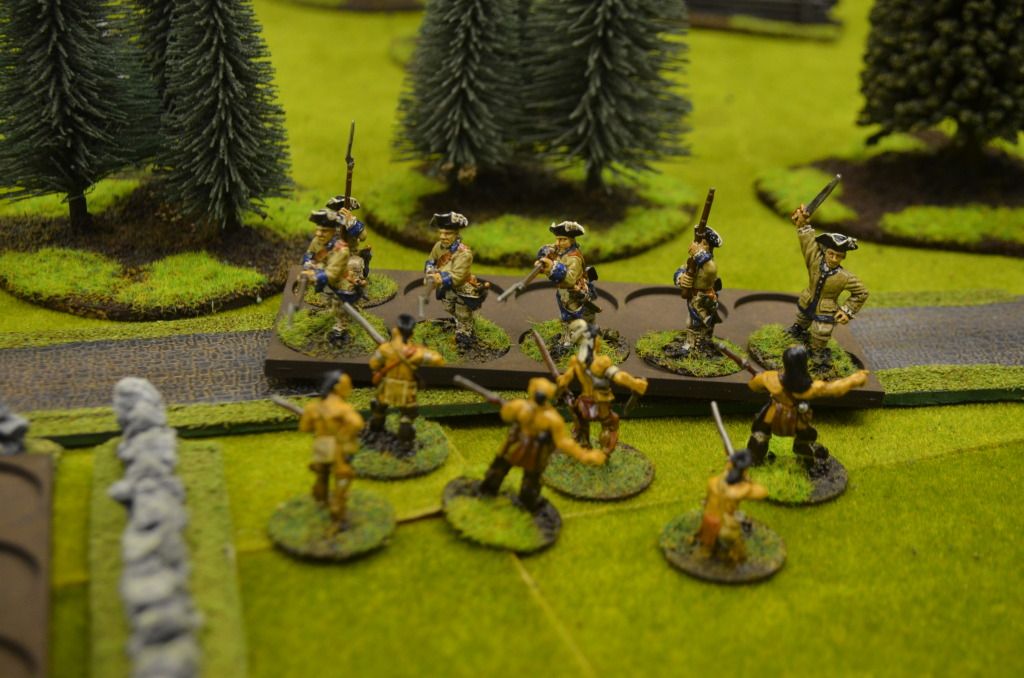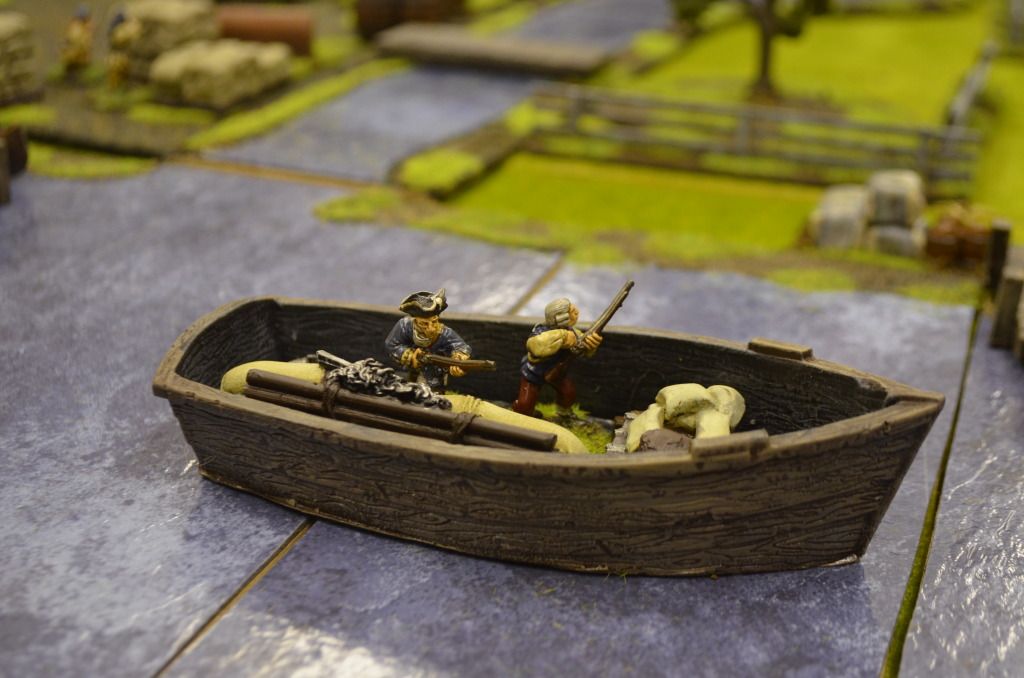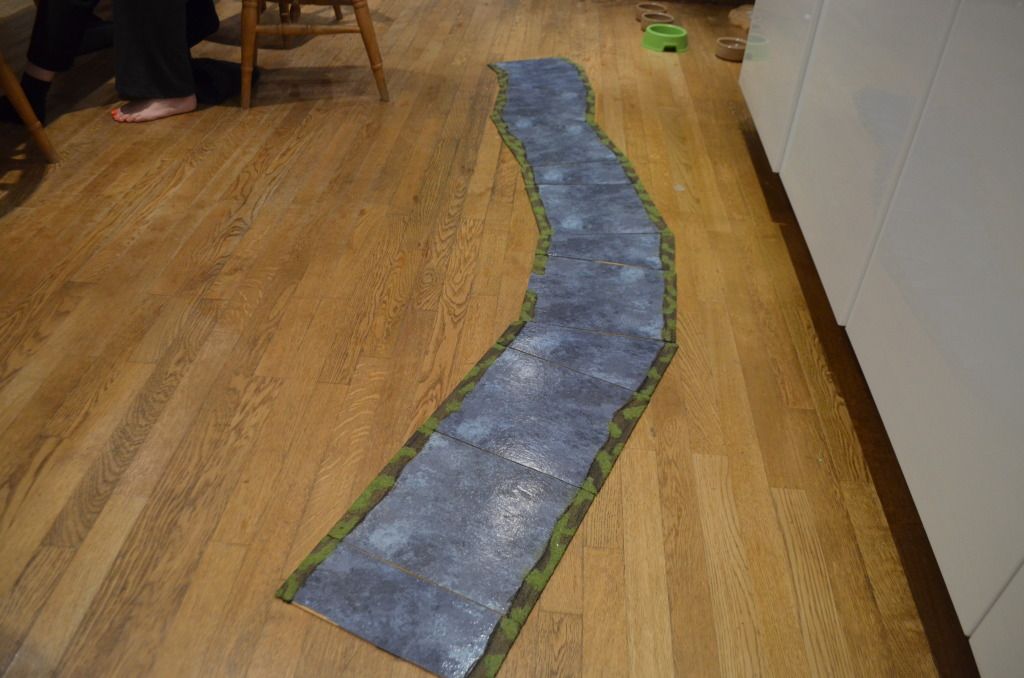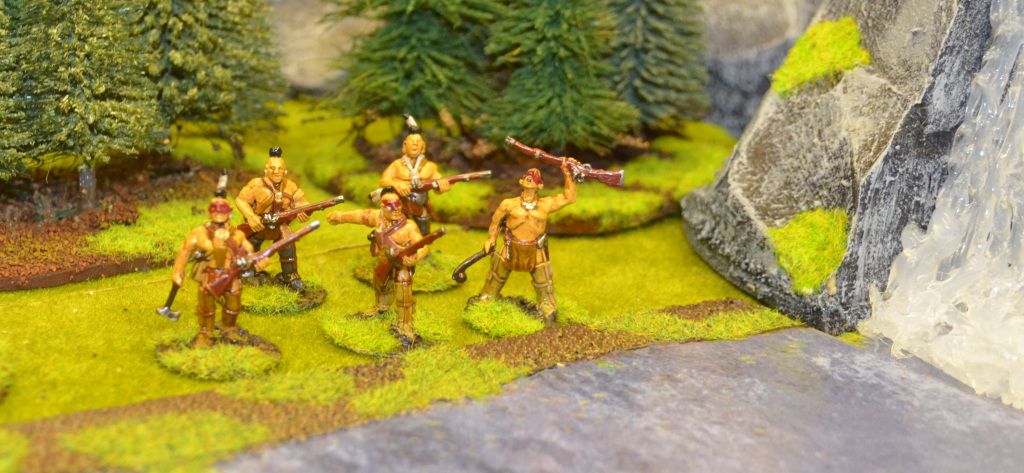Our regular Monday night game was determined to be a straight forward engagement between the French and British forces on the Canadian Border.
The setting was the ficticious settlement of Pilgrims Falls. This strategic location on the upper stretches of the George River has become the battleground of two strong opposing forces. The settlement itself is based on the last trading post in the wilderness, with a prosperos village developing in the vicinity of the small port. Farmsteads, crops and livestock scatter the valley floor. To the North East lie the actual Pilgrim Falls.
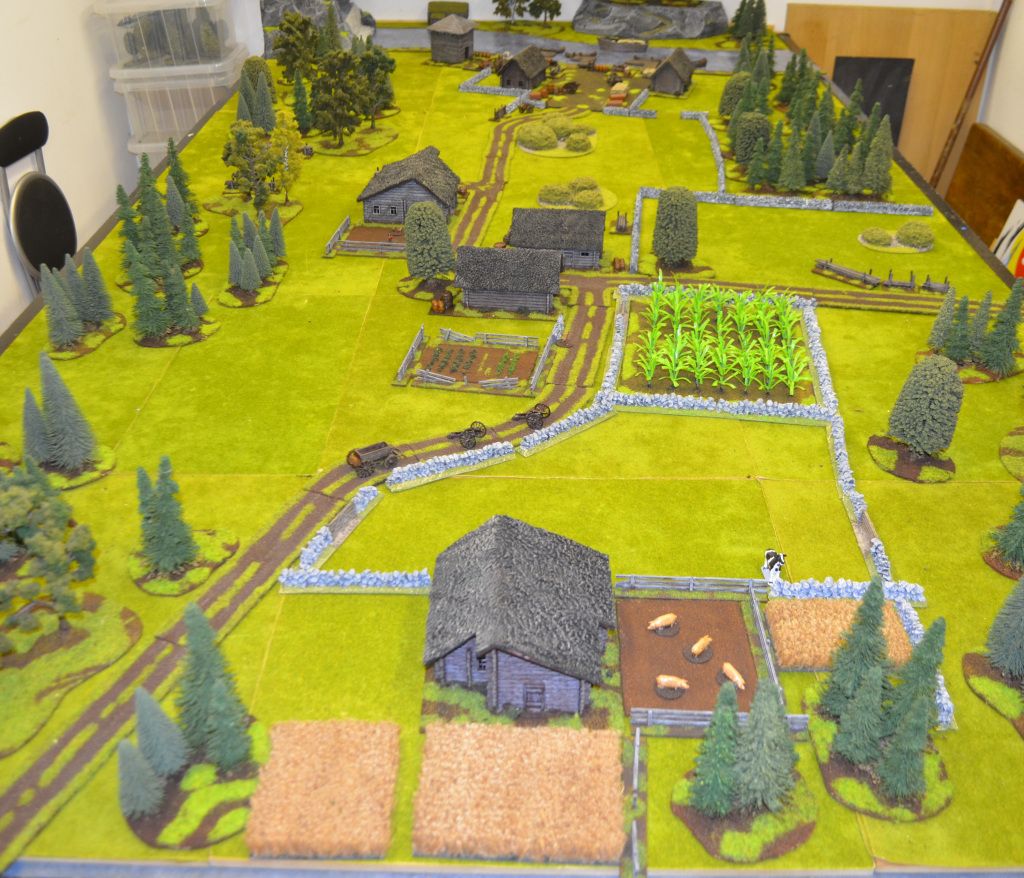 |
| Village of Pilgrim Falls, The waterfall at top of photo. |
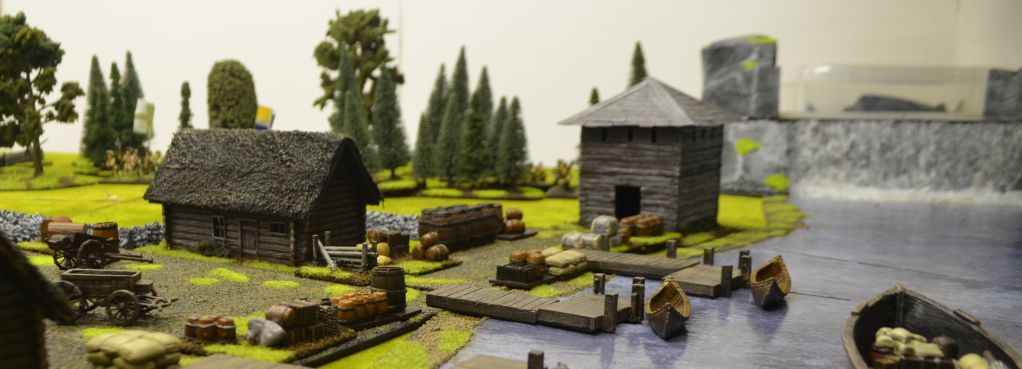 |
| The Jetty at Pilgrims Falls |
 |
| Livestock - (all from Redoubt Miniatures) - Daisy the Cow needs from friends |
 |
| Chickens - soon to be Coq au Vin! |
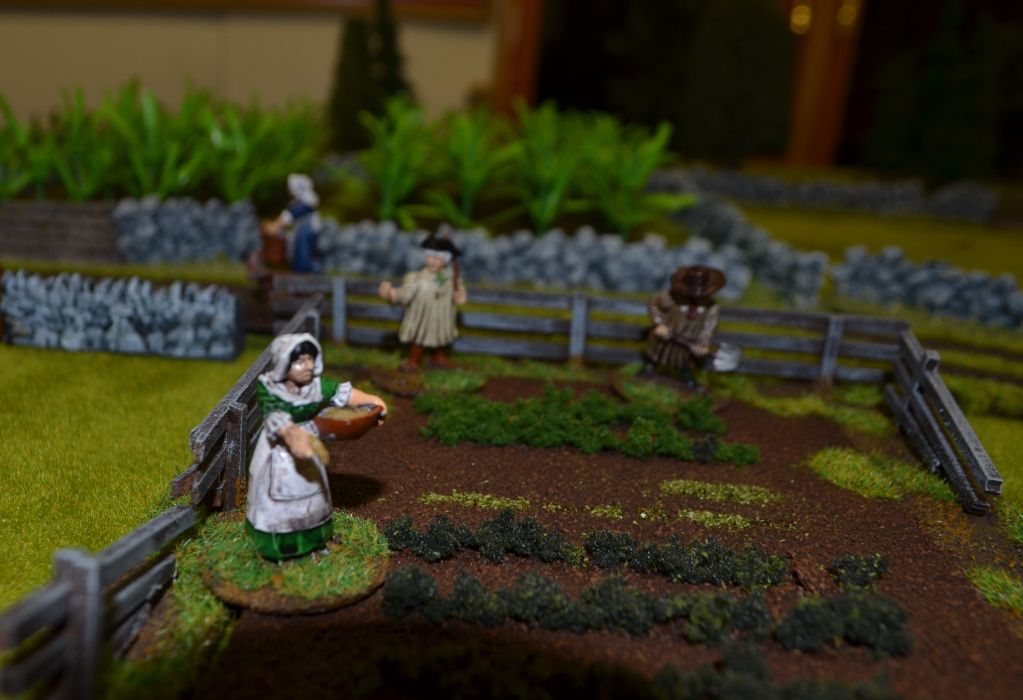 |
| New Field - with workers |
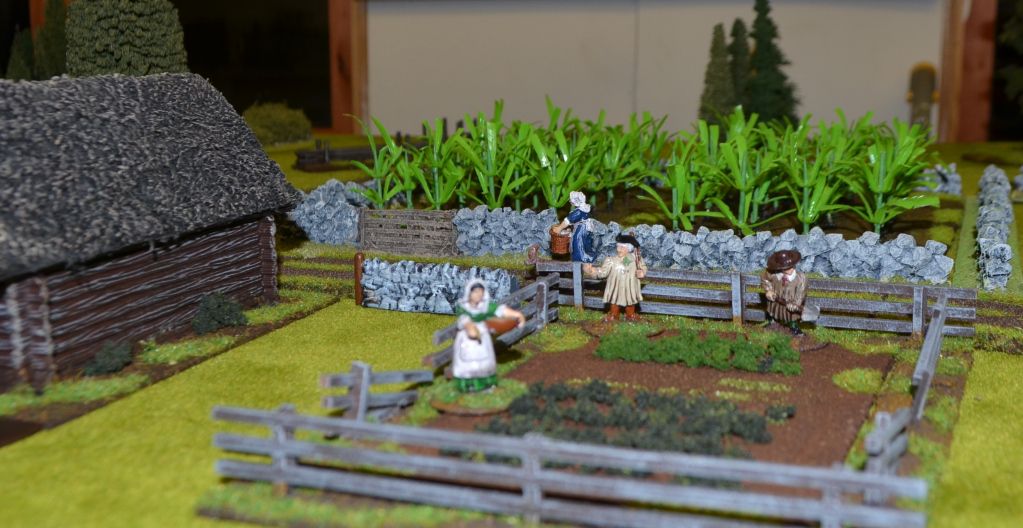 |
| The Settlement oblivious to the noise that follows |
The forces based on circa 600 points (Muskets & Tomahawks were evenly matched). The objective simple - drive the opposition from the field.
The Britrish commanded by Colonial Richards had three units of Regular infantry with two regular artillery pieces. These redcoats were supported by three units of rifle armed Rangers. Approcimately 70 men in this sizeable force.
The French were lead by the infamous Colonel Orly, he mustered three strong units of French Infantry, three units of musket armed Canadian Militia and three local Indian Warbands - a total of around 80 men.
 |
| The French emerge from the woods |
It was agreed that both forces would start just over 2 foot apart with the French forces played out first. Both sides took advantage of cover from walls, buildings and woods.
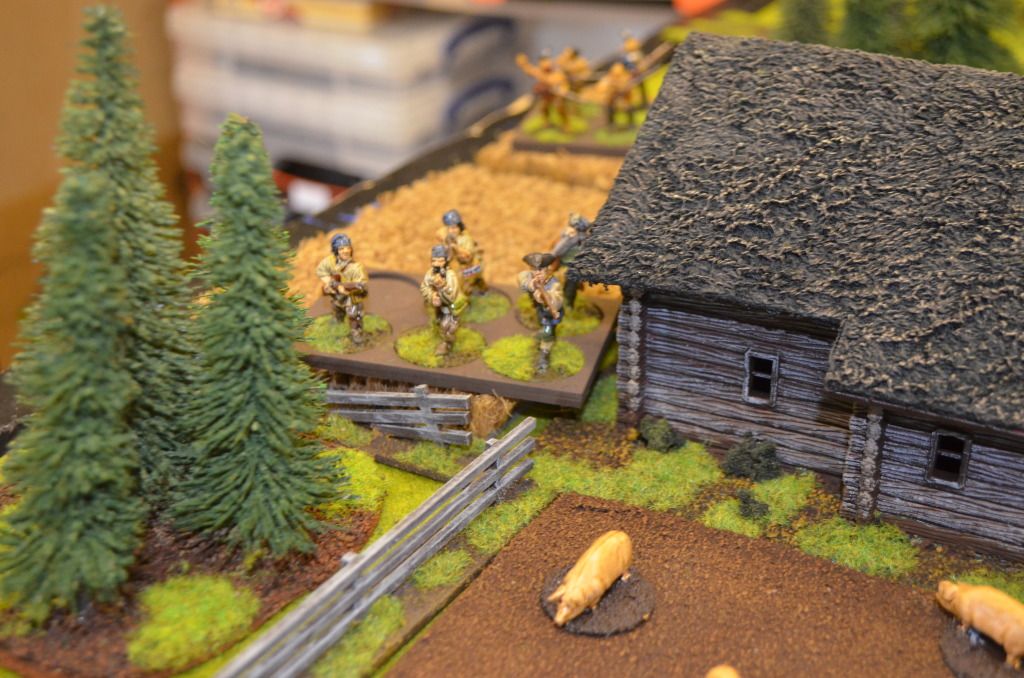 |
| Les Pigs... |
 |
| French deployment on Eastern Flank |
During the first turn the French took the initiative and moved forward. Two flanking attacks using the Indians and Irregulars aimed top sweep around the British line, whilst the formed troops would attack the centre.
 |
| Militia sweep through Pilgrim Falls |
The early phases of the game saw the French sweep out around the flanks capturing the port and the western Farmhouse. (Much to the amusement of the local domestic animals)
 |
| Militia & Indians on Western Flank |
Meanwhile the French Regulars moved into the central village. With neither side seeing the other the battlefield remained eerily silent.
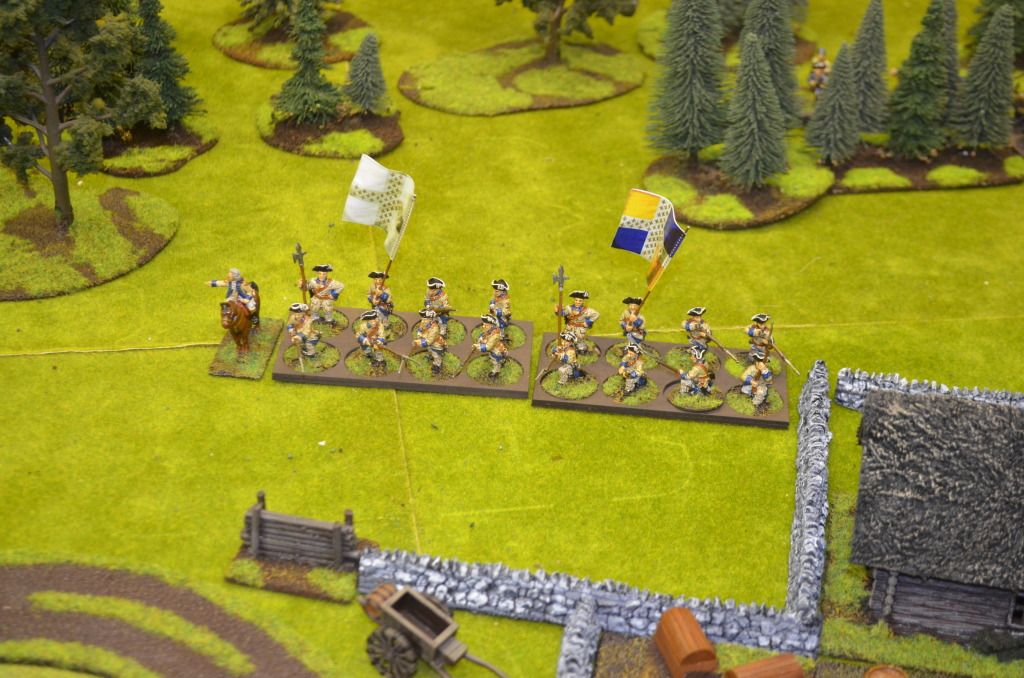 |
| French Regulars under Colonel Orly advance |
Eventually some of the cards for the British began to turnover. The British centre advanced with Artillery support. Finally the Redcoats could see the French mingling around the central village. Firing Lines were hastily drawn up and two units opened fire on the belkeagured defenders. Despite the solid walls of the cabin French men died and the unit was driven backwards out of the building.
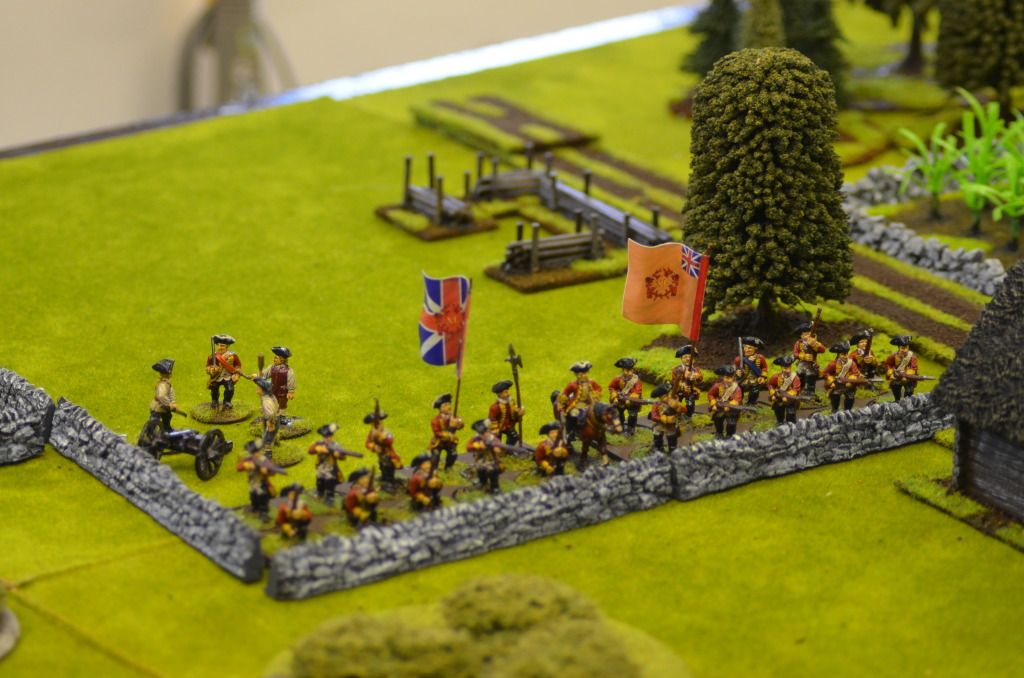 |
| AImpressive British Line with Artillery support |
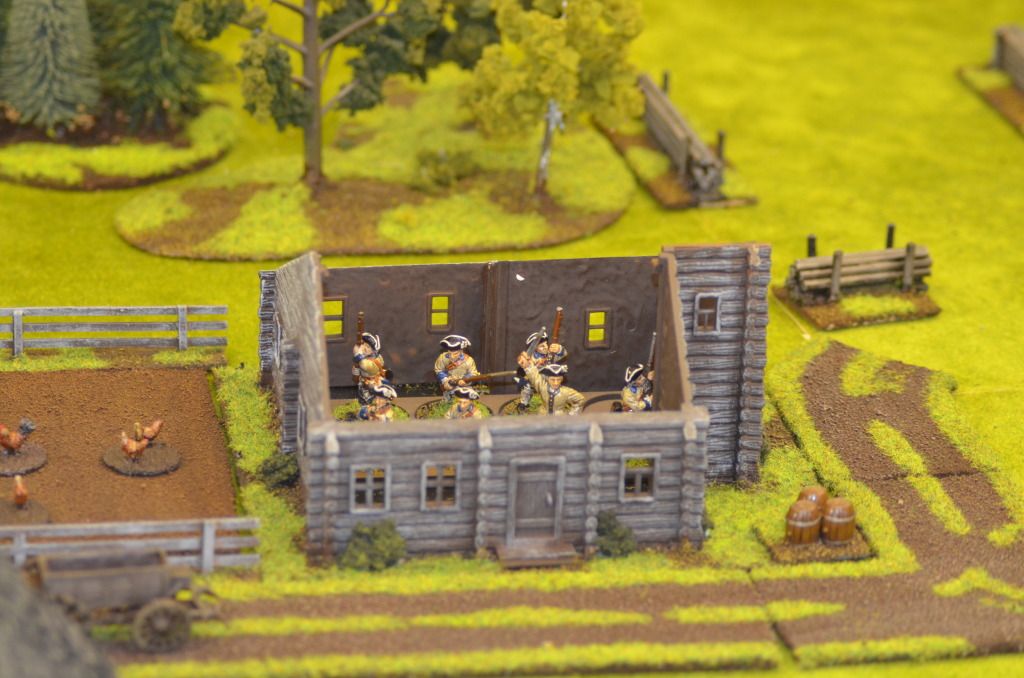 |
| French Defenders |
Over on the western flank a gun battle had erupted between the Indians and the Rangers hidden in the Cornfield. Sporadic firing caused few casualties. The Western redcoat unit advanced and opened fire on the Indians skulking in the farmyard, a few kills drove them off the field. However this line soon came under fire from Canadian Militia and they too were driven backwards.
 |
| Rangers in Maize field |
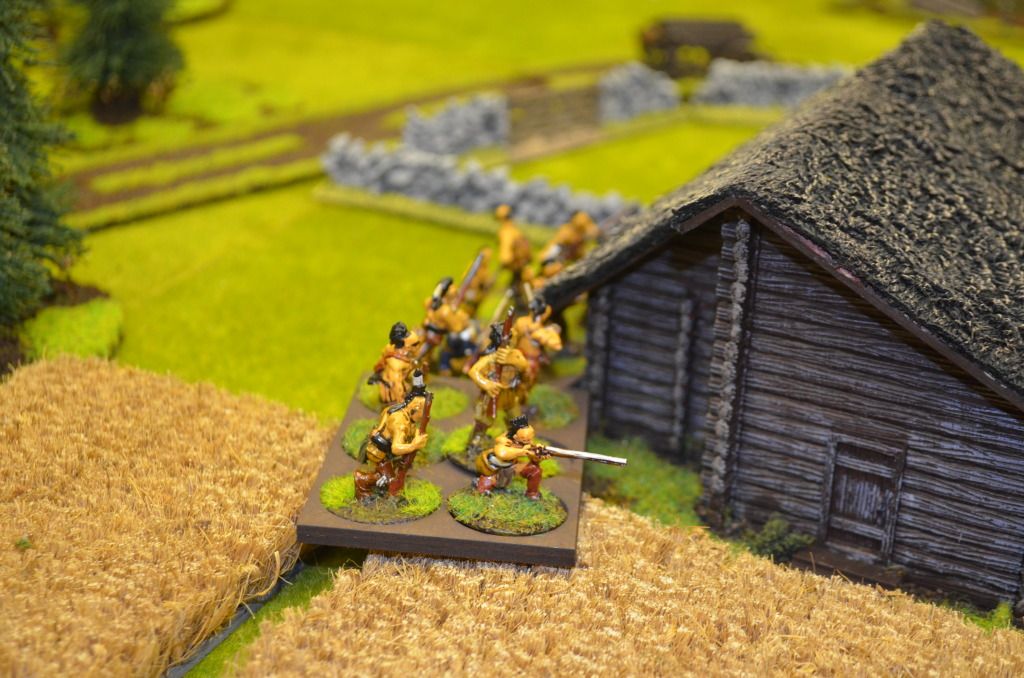 |
| Indians advancing |
Back on the Eastern Flank the Canadian Militia under the guidance of Major Dumas had circled around the Rangers holding the flank, driving one unit into flight and causing no end of consternation as they advanced along the woods on the British baseline.
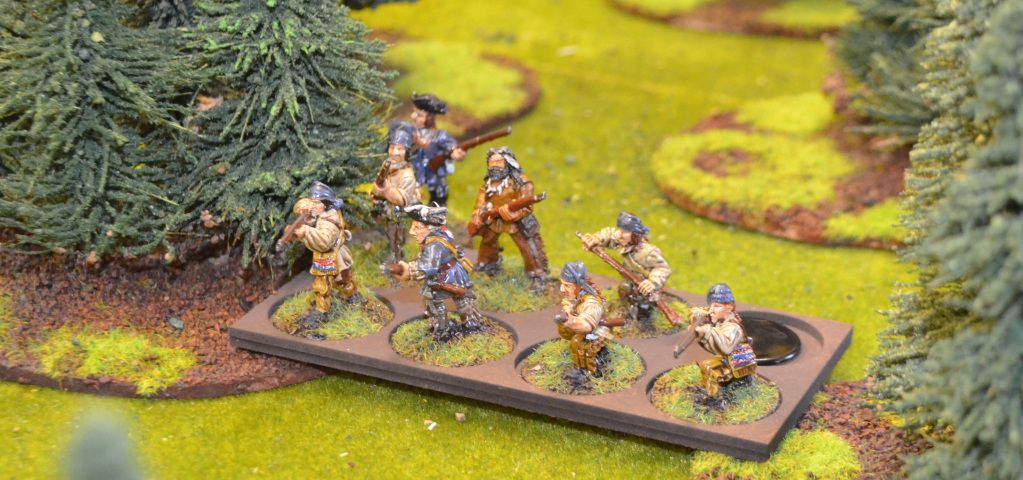 |
| Canadian Militia Push forward |
In the centre the two comnbatants slugged it out with their regulars, some damn fine firing from the French began to tell on the British Defenders. As the eveing wore on Casualties began to build on both sides with the French performing better.
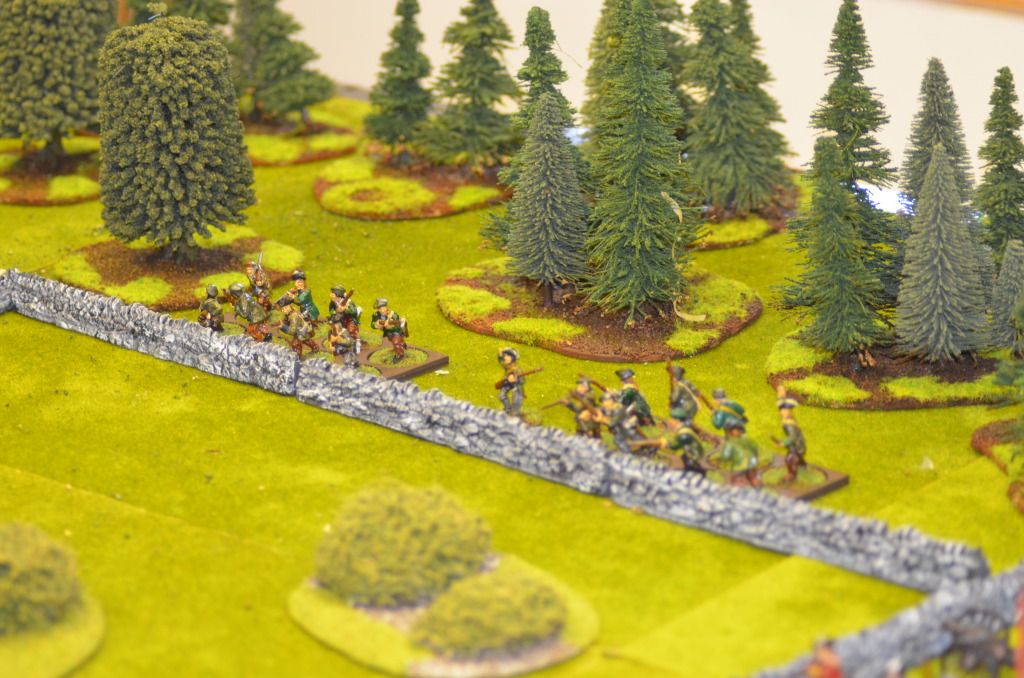 |
| Rangers - soon to be flanked |
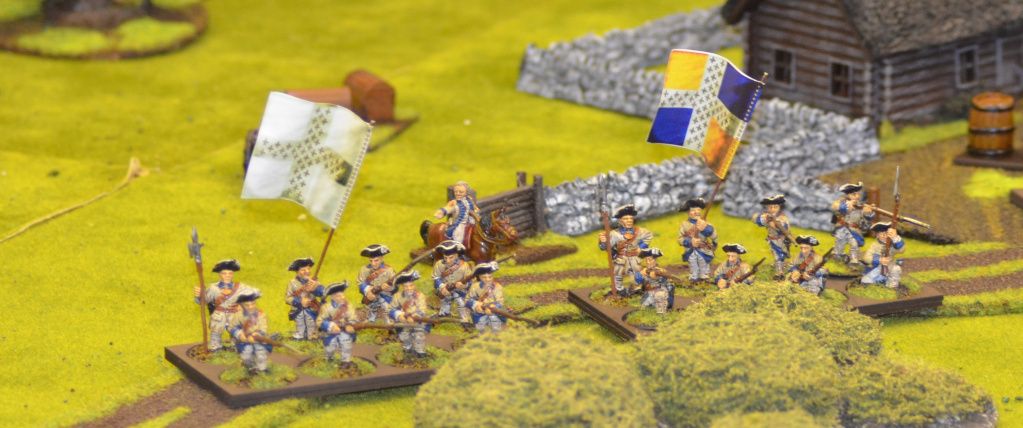 |
| French Line 'duel' with British Defenders |
Back to the West an Indian unit had rushed an unloaded artillery piece, dropping one gunner in the tomahawk charge they expected the rest to fall quickly. Six braves against three men. Three hits from the Indians, three saves from the gunners - three hits from the gunners and no saves for the Indians saw an unlikely victory for the English. The Indians were driven back into the sights of a formed British line - boom their bodies dead before they hit the ground.
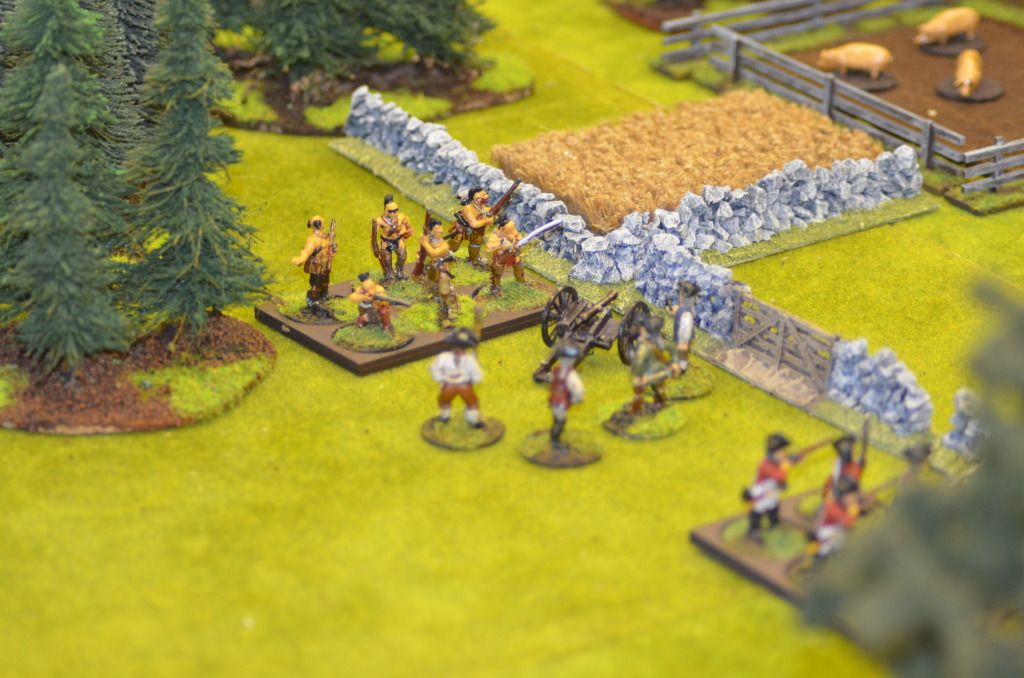 |
| Indian Tomahawk Charge on Cannon Crew |
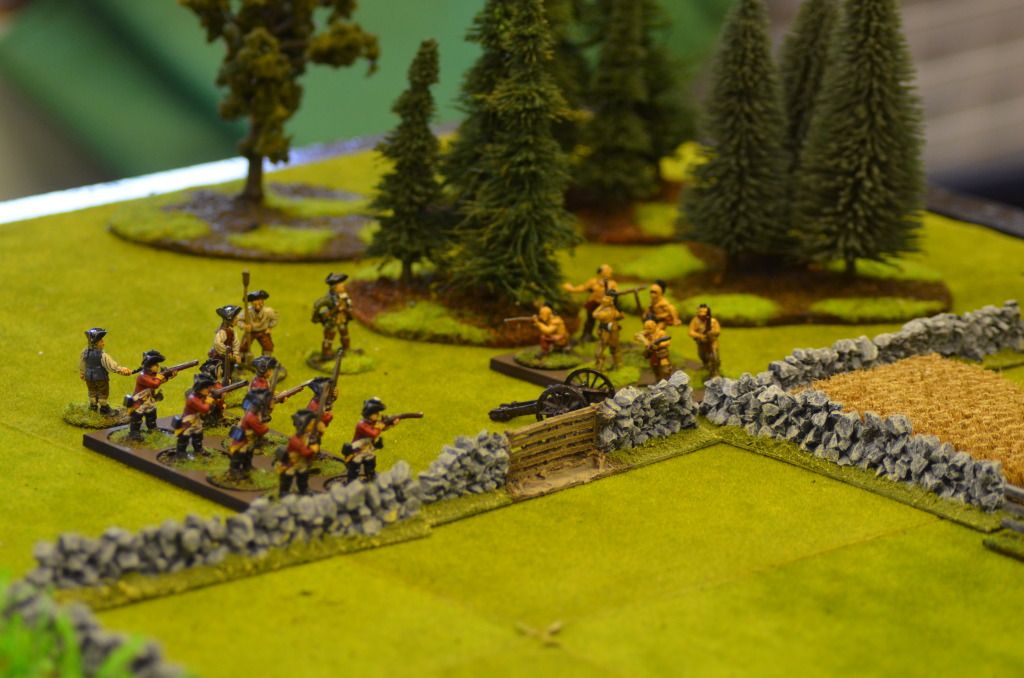 |
| Indians get wasted |
Despite this small victory the British had no answer for the massed French units and the Militia charging towards them. With the majority of buildings in the hands of the French and the British position comntracting a victory was given to the men from Gaul.
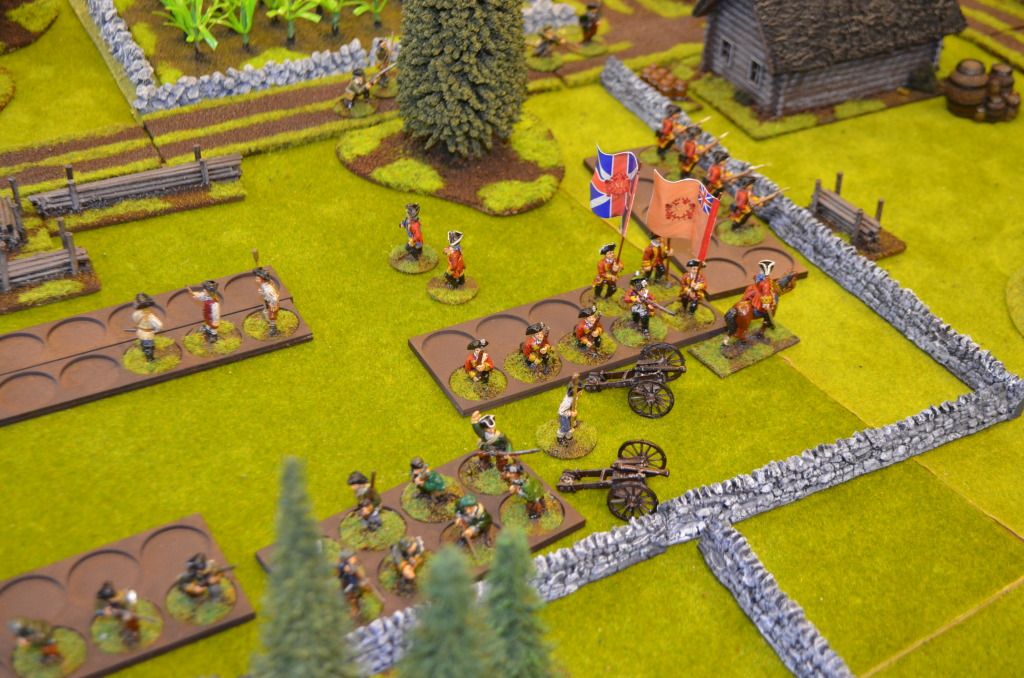 |
| A retreating British Force |
Thoughts:
Artillery is not very good - it raely hits and does not have a major impact - we will strengthen this for next game.
Rifles are effective at longer ranges but onluy if you can see the enemy
600 points plus per side allows for a good game but be wary of it turning into a slogfest
All good fun...
Thanks for reading
Eric the Shed

